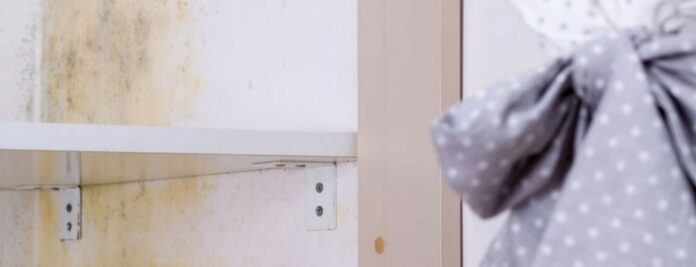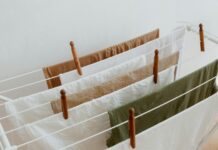Mould can sometimes grow in various places in your house, risking spoiling your belongings and threatening your health. Antanas Budvytis, managing director of Instrument Furniture, has revealed how to clean mould should it grow in your wardrobe, and how to prevent this from happening in the first place.
What is mould?
Mould is a type of fungi which thrives in poorly ventilated and damp areas. It often produces a musty smell and is soft to the touch. It can vary in colour but is most commonly black, grey, or green. The colour is caused by the humidity and light levels it is exposed to, and it reproduces and grows quickly, meaning it can be a problem if it’s not tended to.
Why is it important to remove it?
Mould can cause a range of health issues, from allergies and headaches to asthma and bleeding in the lungs. Also, if mould grows in your wardrobe, it can ruin your items, potentially irreversibly.
Why does mould grow in a wardrobe?
Mould requires moisture in its environment to grow. For it to grow in your wardrobe, there will likely be either high humidity or a water leak. If a wardrobe is placed against a wall, it can be affected by leaking pipes; even a small amount of water can stimulate mould growth. A wardrobe can also grow mould if it migrates from overhead. Leaks in the roof or attic can spread through your house and into your wardrobe. Furthermore, if you live in a place with high humidity, your wardrobe is at higher risk of mould infestation, especially if there is poor ventilation.
How can I remove mould from my wardrobe?
The first thing to do is to work out what the cause of the mould is so you can stop the moisture, preventing further growth. Once you’ve identified the cause and rectified it, you can then clean the mould which is already present. Products are available to buy to eliminate mould, however they often contain harsh chemicals which could spoil your belongings if they come into contact with the product. Alternatively, you can mix equal parts warm water and white vinegar and wipe this mixture over the mould with a cloth. Be sure to wring out the cloth so that is damp to the touch and not dripping with excess. This will remove the top layer of mould, so the next step is to kill any spores which may have penetrated the wood. Do this by wiping pure white vinegar over the surface and leaving it to dry. Once the vinegar has dried, wipe over it with cold water and dry with a towel.
How can I get mould out of my clothing?
There are three methods you can try to remove mould that may have spread to your clothes. The first is to take a toothbrush you haven’t used and gently scrub off the mould with it. You can also use a stain remover, following the directions of the product. Lastly, you can machine or hand wash them in a solution of hot water and vinegar.
How can I avoid mould growing in my wardrobe in the first place?
Ensure that your wardrobe (and room) is well-ventilated. If you live in a humid region, it may be useful to invest in an extractor unit. Vent plates can also be added to your wardrobe as a means of ventilation. It is also useful to store your clothes in a way which allows airflow between them. If they’re packed tightly, mould may grow because of the low air circulation. Wardrobes with separate compartments for storage may be worth looking into.
After washing your clothes, don’t put them away until they have completely dried. Damp clothes can attract mould which can then spread through your wardrobe.
Mould is a common household problem, however it can be prevented and rectified by following these expert tips.
More information can be found at instrument.london.
Help keep news FREE for our readers
Supporting your local community newspaper/online news outlet is crucial now more than ever. If you believe in independent journalism, then consider making a valuable contribution by making a one-time or monthly donation. We operate in rural areas where providing unbiased news can be challenging. Read More About Supporting The West Wales Chronicle


























